Ex. 1 Read a short text, answer the teacher’s questions.
INTRODUCTION. INTERVIEWING.
INTRODUCTION
Ø Read and listen.
- Hello! I’m Bob. I’m an intending teacher. I’m American. I’m 25.
Ø Think about the possible replies.
- Hello! I’m Nick. I’m a __________. I’m _____________. I’m _____.
- Hello! I’m Paul. I’m a __________. I’m _____________. I’m _____.
- Hello! I’m Ken. I’m a __________. I’m _____________. I’m _____.
- Hello! I’m Polly. I’m a __________. I’m _____________. I’m _____.
- Hello! I’m Kathy. I’m a __________. I’m _____________. I’m _____.
Ø Tell the class about yourself.
Ø Hello! I’m …. I’m _______________. I’m ___________. I’m _______.
Ex. 1 Read a short text, answer the teacher’s questions.
| Hi, My name is Sarah. I’m English. I’m from London. I’m 13. I’m a pupil at St James School in London. What about you? Love, Sarah |
Ex.2 Write the application letters for the following people.
 | 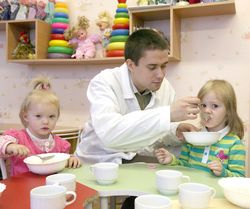 | 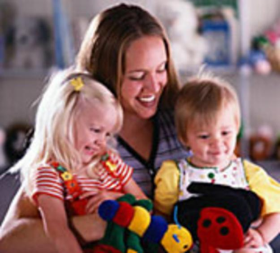 | 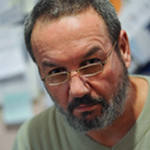 |
| Mary Smith Nursery school teacher English London | Tom Stuart Infant school teacher Irish Dublin | Jenny Brown Preschool teacher Canadian Ottawa | Robert Grey Kindergartener Australian Sydney |
ENGLISH LETTERS AND SOUNDS
Letters
ü 20 consonants
ü 6 vowels
Sounds
ü 24 consonants
ü 20 vowels
- 12 simple sounds (5 long and 7 short vowels)
- 8 double vowel sounds
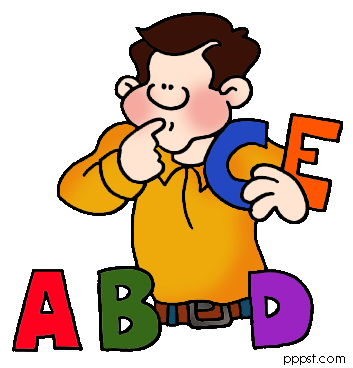 ex.3 It is important to learn the alphabet! Listen to the teacher pronouncing the names, write down the names and then spell them.
ex.3 It is important to learn the alphabet! Listen to the teacher pronouncing the names, write down the names and then spell them.
/ʤɒn/ ________________
/ʤeɪms/ ________________
/ˈedwəd/ ________________
/ʤoʊɪ/ ________________
/ˈmaɪkəl/ ________________
/deɪvɪd/ ________________
/ˈreɪtʃəl/ ____________
/ˈfi:bi:/ _____________
/ˈʤu:li:/ ___________
/ˈseərə/ ____________
/ˈlaɪzə/ ________________
Ex.4 Spell the names of the famous sportsmen
MUHAMMAD ALI; ALAN SHEARER; HENRIK LARSSON; BOBBY CHARLTON; MICHAEL OWEN; BOBBY MOORE; PELE; COLIN BELL; RONALDO; DAVID BECKHAM; DIEGO MARADONA; GEORGE BEST; BJORN BORG; MARIA SHARAPOVA; TIM HENMAN; PETE SAMPRAS; STEFFI GRAF; SERENA WILLIAMS; GIL DE FERRAN; MICHAEL SCHUMACHER; LEWIS HAMILTON
ex.5 Fill in your identification card. Get ready to answer the questions.
What is your name?
What is your surname?
How old are you?
When is your birthday?
What is your address?
What is your phone number?
Work in pairs. Ask and answer the questions.
Ex.6 Match the questions with the possible replies. Ask and answer the questions.
1. What’s your first name?
2. What’s your last name/ surname?
3. What’s your full name?
4. Where do you live?
5. What’s your phone number?
6. Where are you from?
7. How old are you?
8. What do you do?
9. When is your birthday?
10. What’s your nationality?
11. Where were you born?
12. What’s your email?
13. What’s your marital Status?
14. What’s your ID number?
15. _____________________?
( ) My email is ________________.
( ) I was born in _______________.
( ) My nationality is ____________.
( ) I live in ___________________.
( ) I am ______________________.
( ) My full name is _____________.
( ) I am ______________________.
( ) My phone number is _________
( ) I am a _____________________.
( ) My last name is _____________.
( ) I am from __________________.
( ) It is ______________________.
( ) My birthday is on ___________.
( ) My first name is ____________.
( ) __________________________.
THE READING RULES
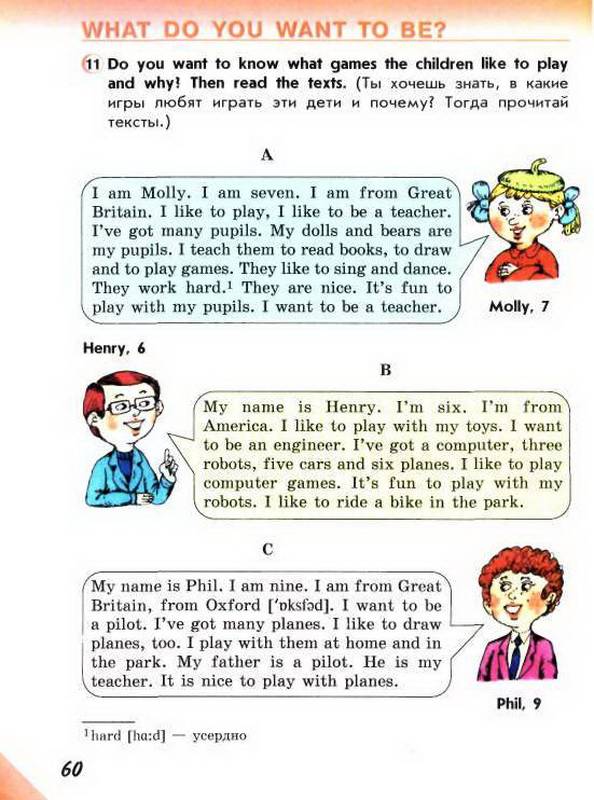
ENGLISH CONSONANT SOUNDS AND LETTERS
Bb - [b]
Dd – [d]
Ff – [f]
Kk – [k]
Ll – [l]
Mm – [m]
Nn – [n]
Pp – [p]
Tt – [t]
Vv – [v]
Zz – [z]
Jj – [d3]
Hh – [h]
Qq – [kw]
Rr – [r]
Ww – [w]
Ss – [s], [z]
Cc – [s], [k], [∫]
Gg – [g], [d3], [3]
Xx – [ks], [gz]
Ex.1 Read the following words. Guess what they mean.
Ss– [s] – sit still, [z] – rose, nose
Cc – [s] – circus, nice, [k] - cap, disco, [∫] - ocean
Gg – [g] – game, girl, goal, begin, [d3] – stage, page, age, [3] - garage
Xx – [ks] - mixer, box, [gz] – exam
ENGLISH VOWEL SOUNDS AND LETTERS
| I | ||
| II | Открытый слог | |
| Закрытый слог V+C(CC) | (как в алфавите) V+C+E | III Арный слог V+R |
A – E - I – O - U
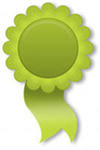 A – [æ] – Adam, Alfred, Ashton, Agatha, Francis, Catherine, Madeline
A – [æ] – Adam, Alfred, Ashton, Agatha, Francis, Catherine, Madeline
E– [e] – Dennis, Delia, Emily, Fred, Emma, Devin, Leslie, Melanie
I – [i] – Lynn, Linda, Mildred, Sybil, Sydney, Sylvia, Philip, Richard
O – [o] – Molly, Oscar, Robert, Sophia
U – [Λ] – Hunter, Humphry, Justin, Duncan
 A – E - I – O – U
A – E - I – O – U
A –[α:] - Carl, Charles, Carter, Martin, Margaret, Oscar, Richard
E – [ә:] – Bernard, Mercy, Percy
I – [ә:] - Shirley, Virginia, Irving
O – [o:] - Gordon, Lorna, Morgan, Norman, Clifford,
U – [ә:] – Curtis
Ex.3 Write down the following words into three columns:
1) Rap, fame, pal, pale, farm, mark, tape, harm, map, smart, lark
2) Chess, he, bell, merge, let, egg, better, eve, herbal, fee
3) Hill, side, tired, fish, firm, fir, ride, hydra, drill, pine
4) Horn, sob, pole, short, mole, Coke, born, dole, block, frog
5) Lunch, church, puma, murmur, bun, due, brush, sun, mute, turn
Read aloud.
1. A kindergarten, a school, a boy, a girl, a schoolboy, a schoolgirl, a pupil, a student, a bus, a book, a teacher, children, a woman, a man, a house, a car
2. An eraser, an apple, an alphabet, a pen, a pencil, a ruler, a desk, a chair, a schoolbag, chalk, a blackboard, a balloon
Ex. 2 Read and listen.


This is a kindergarten.
Number 2 is a SCHOOL.
This is a school.

 This is a boy.
This is a boy.
WHAT IS THIS?
This is a BOY.
WHAT IS THIS?
This is a GIRL.


Number 5 is a SCHOOLBOY.
Number 6 is a SCHOOLGIRL.


Is this a PUPIL?
Is this a STUDENT?

 Is this a BUS?
Is this a BUS?
No, it is not a BUS, Is this a BOOK?
It is a BUS.


WHAT IS THIS?
This is a TEACHER.
This is a teacher and
CHILDREN.


Is this a WOMAN and a MAN?
No, this is a BOY and a GIRL.
Is this a HOUSE and a CAR?
No, this is a SCHOOL and a BUS.
Ex. 3 Fill in the gaps
 |  |  |  |  |
| Number 1 is a … | Number 2 is a … | Number 3 is …… | Number 4 …… | ………a schoolboy. |
 |  |  | ||
| …….6 is ……… | ……..7 is ………. | Number 8 …….. |
Ex.4 Answer the questions
 |  |  |  |
| What is this? It is a ……… | What is this? It …………….. | What is this? ………………… | Is this a teacher and books? - …………… |
Ex. 5 Choose a/an?
Woman, egg, eye, desk, teacher, eraser, school, apple, man, girl, boy, alphabet, pencil, university
Ex. 6 Ask the questions
 | Is this an eraser? Is it a bag? What is it? | Yes, it is. No, it isn’t. It is an eraser. | 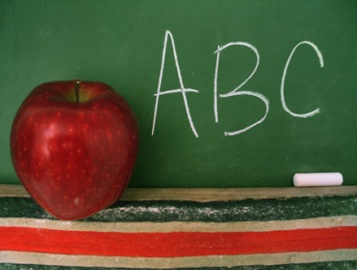 | ________________________________ | Yes, it is. No, it isn’t. It is an apple. |
 | ____________________________________________ | Yes, it is. No, it isn’t. It is an ABC. |  | ________________________________ | Yes, it is. No, it isn’t. It is a pen. |
 | Where ____? ___________ on the table? __________ __________? | It is on the ruler. No, it isn’t. The pencil is. | 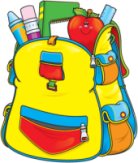 | _______________________________________ | It is in the bag. No, it isn’t. The apple is. |
PRESENTATION - PLURALS
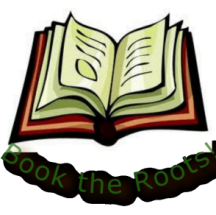 | 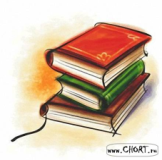 | 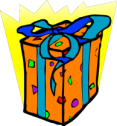 |  |
| A book | Three books | A BOX | ………. boxes |
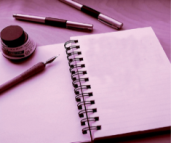 | 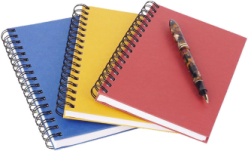 |  |  |
| A notebook | ………… notebooks | A laptop | …………laptops |
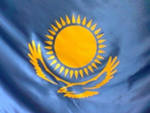 | 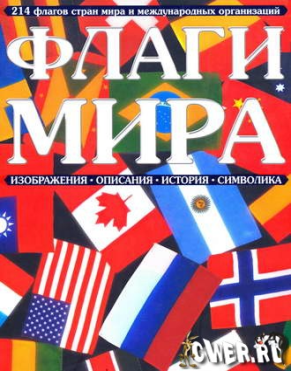 |  |  |
| A FLAG | …………….. flags | A child | ……….. children |
THIS IS/ THESE ARE
 |  | 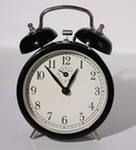 | 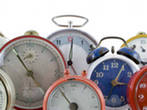 |
| This is a globe. | These are globes. | This is a clock. | These are clocks. |
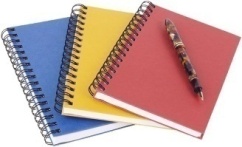
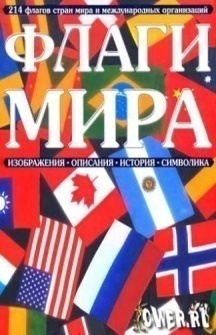 What are these?
What are these?
These are notebooks. What are these?
These are notebooks and a pen. These are flags.
Are these flags? Yes, these are.
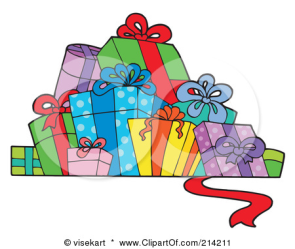 THAT IS/THOSE ARE
THAT IS/THOSE ARE
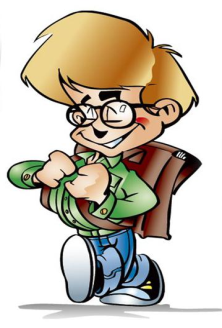
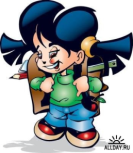
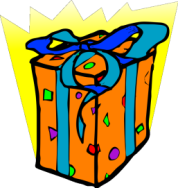 This is a box.
This is a box.
THOSE ARE boxes.
This is a schoolboy.
THAT IS a schoolgirl.
Is that the schoolgirl? Are those boxes?
Yes, that is a schoolgirl. Yes, those are boxes.
Is that a teacher? Are those clocks?
No, that is not a teacher, No, those are not the clocks,
that is a schoolgirl. those are boxes.
Ex. 1 Give the plurals
a) Book, flag, notebook, clock, window, picture, plant, laptop, globe, classroom, inkpot, chair, door.
b) This girl, that school, that teacher, this bus, that eraser, this ruler, this bag, that child.
c) This is a clock. This is a globe. That is a chair. That is a book. This is an eraser. This is an apple. That is an ABC. That is an inkpot. This is not a teacher. That is not a window. This is not a flag. Is that a school? Is this a ruler?
AT THE LESSON (1)
Now look at the picture. It is a picture of a class. The class is in the school; it is not in the college. It is a day; it is not a night. It is ten o’clock. There are some children in the picture. There is a teacher in the CENTRE of the class, and there is a TEACHER’S AIDE on the LEFT of the picture. There are two boys and there is one girl in the picture. They are at the desks. They are at the LESSON.
There are A LOT OF things in the class. There is a blackboard with a flag on it. There is a clock on the left of the flag.
On the RIGHT of the blackboard there is a BULLETIN BOARD. Next to the bulletin board there is a MAP. Under the bulletin board and the map there is a BOOKSHELF with the books on it. There is a globe on the book shelf. In the CORNER of the room there is a TV set and an OVERHEAD PROJECTOR. There is also a COMPUTER in the class.
Ex. 5 Answer the questions
1. Is this a picture of kindergarten? 2. Where is the class? 3. Is the class in the college? 4. Is it a day? 5. What time is it? 6. Is it eleven now? 7. Are there any children in the picture? 8. How many children are there in the picture? 9. Who is in the centre of the class? 10. Is there a teacher’s aide on the right of the picture? 11. How many boys are there in the class? 12. How many girls are there in the class? 13. Where are the children? 14. Are they at the lesson? 15. Is there a blackboard in the class? 16. Where is a flag? 17. Is there a clock on the right of the flag? 18. Where is a bulletin board? 19. What is under the map? 20. Is there a globe in the bookshelf?
| COLORS Red Blue Green Yellow Orange White Multicolored |
1) What color is the blackboard?
2) What color is the bookshelf?
3) What color is the flag?
4) What color is the bulletin board?
5) What color is the map?
6) What color is the floor?
7) What color are the walls?
8) What color are the chairs?
Ex. 6 Fill in the gaps
It is a picture of a ……………. The class …. in the school; it is not in the …………. It … ten o’clock. There …... some children in the picture. There is a ………….. in the …………… of the class, and there is a …………………. on the …………… of the picture. There are …… boys and there …… one girl in the picture. They are ……………….. They are at the ………………...
There are …………… things in the class. There is a ……………….. with a flag on it. There … a clock on the left of the flag.
On the ………… of the blackboard there is a …………………………. Next to the bulletin board there is a ………………... Under the bulletin board and the map there is a ………………….. with the books on it. There …… a globe on the book shelf. In the …………… of the room there is a …………… and an …………………………………. There is also a …………………… in the class.
REVIEW
THE TEACHER AND THE PUPILS
TEACHER: I am the teacher. I am Miss Bell. What are you?
CLASS: We are pupils.
TEACHER: Are you a pupil, Jane?
JANE: Yes, I am a pupil.
TEACHER: Are you a pupil, Kate?
KATE: Yes, I am.
TEACHER: Are you in the classroom, John?
JOHN: Yes, I am in the classroom.
TEACHER: Who are you?
CHRIS: I am Chris.
TEACHER: How are you, Chris?
CHRIS: I am very well, thank you.
TEACHER: What are you all?
CLASS: We are all pupils.
TEACHER: How many pupils are there in the class?
KATE: There are fifteen.
TEACHER: That’s right. Thank you, Kate.
Ex. 1 Choose AM/ IS / ARE
1. I … a student. 2. He … a pupil. 3. You … a teacher. 4. Mr.Bell … a man. 5. Mary … a girl. 6. The desks … in the classroom. 7. We … students. 8. What … you? 9. What … Henry? 10. Who … you? 11. Who … I? 12. … I a student? 13. … he a pupil? 14. … she a teacher? 15. … I the teacher? 16. There … one clock in the classroom. 17. … there three books in the class? 18. There … ten desks in the room. 19. There … a door in the classroom. 20. There … fifteen pupils in the class.
Ex. 2 Answer the questions
1) 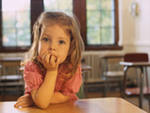 Who are you? 2) How are you? 3) Are you a student? 4) What are you all? 5) How many students are there in the class? 6) How many books are there on the shelf/ in the bookcase? 7) How many windows are there in the room?
Who are you? 2) How are you? 3) Are you a student? 4) What are you all? 5) How many students are there in the class? 6) How many books are there on the shelf/ in the bookcase? 7) How many windows are there in the room?
Ex.3 Make the questions
1. I am a teacher. 2. You are in the classroom. 3. We are all students. 4. Some of the students are girls. 5. The answer if right. 6. They are here. 7. He is near the window. 8. There are only two books on the bookshelf.
PRESENT CONTINUOUS TENSE

+ am/is/are +Ving
| STATEMENT | NEGATIVE | QUESTION |
| I am speaking. | I am not speaking. | Am I speaking? |
| He is speaking. | He is not speaking. | Is he speaking? |
| She is speaking. | She is …. speaking. | … she speaking? |
| We are speaking. | We … … speaking. | … we speaking? |
| You are speaking. | You … … speaking. | … … speaking? |
| They are speaking. | They … … speaking. | … … speaking? |
Ex. 4 Answer the questions
1. Where is a class? 2. What are the children having? 3. How many children are there in the picture? 4. Are the children sitting at the desks? 5. Is the teacher sitting? 6. Where is she standing? 7. Is it a fine day? 8. Is it raining? 9. What is shining? 10. What is the teacher explaining? 11. What is there on the tables? 12. What are the children doing? 13. Is the teacher singing a song? 14. Are the children dancing?
Ex.5 Fill in the gaps
1. The children ………………………….. a lesson. 2. The children ………………………….. at the desks. 3. The teacher …………………………………... 4. It isn’t …………….ing. The sun ………………………... 5. The teacher ………………………….. She ………………………… the rules. 6. Some of the children …………………………... Some of the children …………………………... The others are …………………………………..
Ex. 7 Answer the questions
Where are Charles, Henry, Mary and Jane? 2. What kind of day is this? 3. Is the sun shining? 4. What date is it today? 5. Who is the woman in the centre of the picture? 6. What’s her name? 7. Is she a teacher’s aide? 8. What is she wearing? 9. What has one of the girls got on her desk? 10. What is she doing? 11. What’s her name? 12. What is she wearing? 13. Is she wearing a cap? 14. Can she draw? 15. What are the other children doing? 16. What is Jane doing? 17. Can she draw very well? 18. Is she a good drawer? 19. What is a teacher doing? 20. Is a teacher playing with a paper-plane? 21. Can a boy draw? 22. Is Miss Smart looking at the pictures? 23. What has she got in her hand? 24. Why isn’t she reading?
What subjects has Tom got?

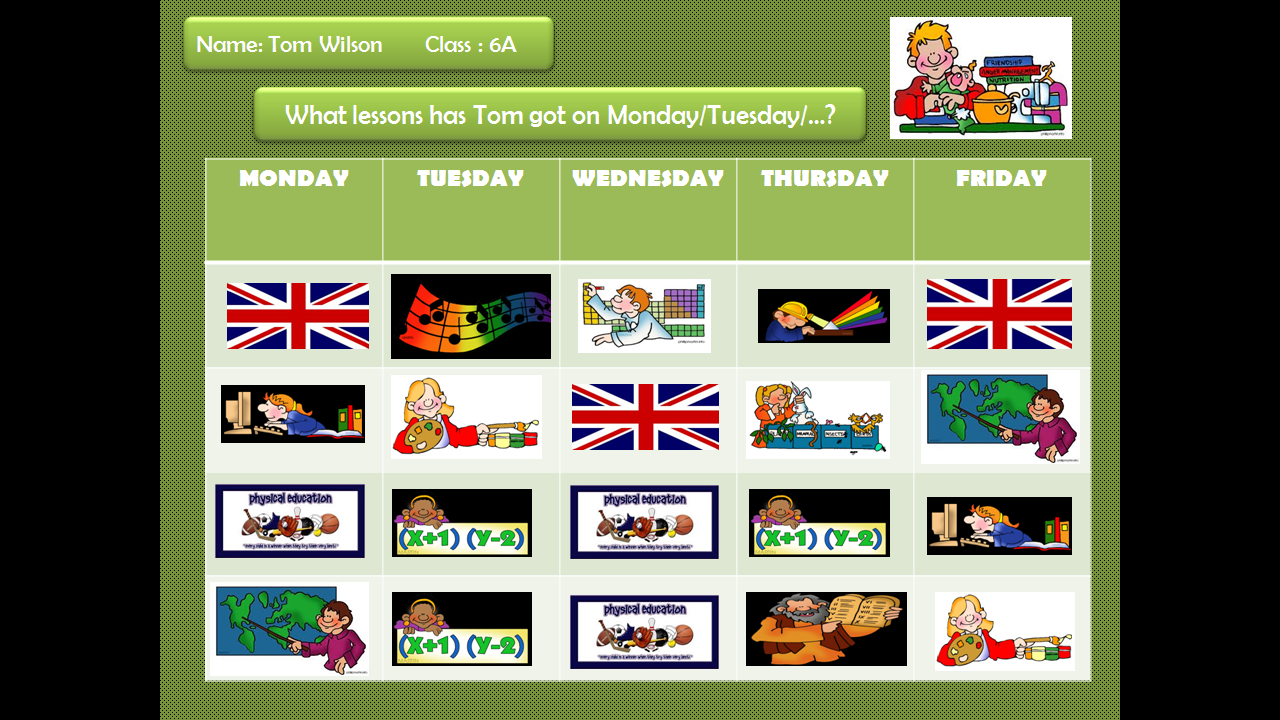
Ex. 3 Answer the questions
1. How old are Rose and Bob? 2. Are Rose and Bob a wife and a husband? 3. Are they both schoolchildren? 4. Is their school far from home? 5. Do they speak any foreign languages? 6. Do they have any foreign books at home? 7. Are Rose and Bob both good students? 8. Who always works hard, Rose or Bob? 9. Why is Bob a lazy-boy? 10. What is Bob’s hobby?
PRESENT SIMPLE TENSE
| Positive | Negative | Question |
 + V(s) + V(s) |  + don’t/doesn’t V + don’t/doesn’t V |  Do/does V? Do/does V? |
| Do you like teaching children? I like teaching children. I don’t like teaching children. |
| Does he like playing guitar? He likes teaching children. He doesn’t like playing guitar. |

Ex.4 Look, read and write
1. We … (wash) the car every week. V 2. I … (drink) lemonade. X
3. … they … (watch) TV every evening? ? 4. … you … (like) ice-cream? ?
5. They … (brush) their teeth every morning. V
6. We … (like) spinach. X
Ex. 5 Write
1. He/ like/ cats V
2. They/ get up/ at 9 ?
3. She/ watch TV/ every day X
4. He/play/volleyball ?
5. They/ drink/ tea X
6. She/go/ to school at 8 V
7. You/ eat/ fish ?
8. He/ speak/ English X
JOKE - DO/ DOES
Dad, …… a dishwasher wash dishes?
| PROFESSIONS |
And …… a bus driver drive buses?
Yes.
And …… a weightlifter lift weights?
Yes. Why all the questions?
Well, …… a shoplifter lift shops?
When a doctor doctors a doctor, does the doctor doing the doctoring doctor as the doctor being doctored wants to be doctored or does the doctor doing the doctoring doctor as he wants to doctor?
MR. PRIESTLY, THE TEACHER
This is Mr. Priestly, the teacher. He teaches English and he KNOWS English, French and German, and he SPEAKS and READS and WRITES these languages very well.
He is not a young man, but he is not old. He is about forty-five years old. He is always very WELL-DRESSED. He usually WEARS SUITS of dark brown, dark blue or dark grey.
He speaks QUIETLY AND PLEASANTLY, but there is STRENGTH under his QUIETNESS, and every student in his class knows this.
Ex.2 Answer the questions
1. Who is the man in the picture? 2. Is he young or old? How old is he? 3. What is he? 4. What languages can he speak and read and write? 5. What can you say about his clothes? 6. Where is he sitting? Are there any other chairs in the room? 7. What is he doing? 8. Where are the books in the room? 9. Where is there a fire in the room? 10. Where is the desk? 11. What is on Mr. Priestley’s left? 12. What things are on the desk? 13. Where is the reading lamp? 14. Has he many students?
Ex.1 Find the opposites
| boring sad boastful passive nervous shy pessimistic selfish introverted aggressive rude impatient unfriendly lazy |
| POSITIVE | NEGATIVE | POSITIVE | NEGATIVE |
| Active Hardworking Extroverted Sociable Patient Quiet Optimistic | ……………………… ……………………… ……………………… ………………………. ……………………… ……………………… ……………………… | Funny/humorous Placid Happy/ cheerful Friendly Caring/ helpful Generous Modest | ………………………. ………………………... ……………………….. ………………………… ………………………… …………………………. ………………………… |
CHILDREN ABOUT SCHOOL
I really like my school,
and just want to say,
That's where I spend,
most of my day.
One of my favorite classes,
is fun and called gym.
I can nearly touch,
that basketball rim.
I really like my school,
and just want to say,
I'm always excited,
for the very next day.
LIKES AND DISLIKES. Read what the children think of their school.
 Peter: Our school is not the best, but I like it. I’m in the hockey club. It’s fun. Our hockey team is the best in the country.
Peter: Our school is not the best, but I like it. I’m in the hockey club. It’s fun. Our hockey team is the best in the country.
Millie: I don’t like school very much. I have some problems with Maths. Besides, I’m always afraid of those reports that the teacher sends to my parents.
Mary: Oh, school is the best thing in the world. I’m doing well in a lot of subjects. I get A’s and B’s. I see friends that I like very much.
Jane: My dad always says, ‘Homework first.’ I hate it. It’s so boring. The only thing at school that I like to do is to read.
Ø Make a conclusion: … loves school, and … likes school, too. But … doesn’t care much about school. And … hates school.
 ex.1 Read the description of the British school.
ex.1 Read the description of the British school.
You know, in England schools have names not numbers. Well, I go to Cedar Grove School. It’s not very big. Pupils from 5 to 11 years old go to our school. We have ten classrooms and a big beautiful hall. We have many trees and flowers near our school. And so, when it is warm and the weather is fine, we are often outdoors.
My classroom is comfortable and always clean. There are twenty desks in it. The teacher’s table is near the window. There are three windows in our classroom which are as white as the door. The blackboard and the floor are brown. There are nice pictures on the walls and you can see a big, yellow bookcase near the blackboard. There are many books in it and some of them are very interesting. We often read books in class, and sometimes our teacher reads them to us. Yesterday, she read a very beautiful fairy-tale about Snow White. I liked it a lot.
Can you write and tell me about your classroom? Do you read English books in your Reading class? What books did you read last week?
Ex.2 Answer the questions
What is the school’s name?
How many classrooms are there in the school?
When are the children usually outdoors?
How many desks are there in the classroom?
What is the color of the door and the windows?
Where are the books to read?
What story did the teacher read the children yesterday?
Ex. 3 Read and listen. You know Betty has got a lot of friends at school, but besides that she has a great number of pen-friends. Meet her best friend Anastasia who lives in the USA. She is speaking about the system of education in her country.
Primary education begins at the age of six when children go to an elementary school. We stay at the Elementary School for eight years until the age of 14. The subjects taught at the elementary school include Reading, Grammar, Literature, Mathematics, Science, Social studies (which is a subject that combines History, Geography and Economics), Computer, Music, Art, and Physical education.
OUR ENGLISH LESSON

Teacher: Good morning, all! Sit down please! I expect no one is away?
Monitor: Nobody is. All are present. Oh, sorry, Ann is not here.
Teacher: What’s up? Is she ill?
Monitor: It’s flu with a high temperature.
Teacher: That’s too bad. Well now. Let’s begin. We’ll check our homework. Mike, will you take your exercise-book and come to the board?
Mike: Shall I write the words in transcription?
Teacher: Do, and you, Helen, read Text 7, will you? The others should write down the mistakes if she has any. Do you follow me? Will you read a little louder? That’ll do. Any mistakes noticed?
Julia: I believe there are some mistakes in the words ‘family’ and ‘Benny’.
Teacher: That’s it. Please, Helen, pronounce the words. Now it’s correct. You must work more. Pronunciation is your weak point, I’m afraid.
Helen: Shall I read the text again for the next time?
Teacher: Yes. Have another try and make your reading more distinct. Now everybody look at the blackboard!
Mike: Shall I read the exercise?
Teacher: Of course. Is everything correct, Pete?
Pete: I think it is.
Teacher: Thank you, Mike. Clean the board, please, and go to your seat. Have we got the headphones?
Monitor: Here they are.
Teacher: Fine. Let’s listen to the new text. Open your books at page 81. Will you please switch on the tape-recorder? Thank you.
Ex.1 Answer the questions
1. Who is absent at the lesson? 2. Why is she absent? 3. What does Mike do at the lesson? 4. What does Helen do? 5. Are there any mistakes in Helen’s reading? 6. Who reads the exercise? 7. Have they got the headphones? 8. What do they do with the headphones?
THE ENGLISH LANGUAGE
VOCABULARY NOTES
official languagen официальный язык, e. g. English is an official language in many countries of the world.
be usedиспользоваться, e. g. English is used almost everywhere.
be borrowed(from) заимствоваться (из), e. g. The words which are borrowed from English can be used without changes.
popularityn популярность, e. g. In spite of their popularity, the English words and phrases are not welcome.
be dangerous(for) быть опасным (для), e. g. Some people think that English is dangerous for the purity of their native language.
speak(spoke, spoken) v говорить;
to speak English fluentlyговорить на английском языке бегло/свободно владеть английским языком, e. g. If you want to speak English fluently, you must work hard.
gain advantageдобиться преимущества, e. g. You will gain a great advantage over others if you can speak English fluently.
Translate into English.
1. Английский — официальный язык во многих странах мира. 2. Английский язык используется везде: в бизнесе, науке, медицине. 3. В русском языке много слов, которые были заимствованы из английского языка, например: сода, теннис, аэропорт и другие. 4. Некоторые люди думают, что использование английского языка является опасным для чистоты родного языка. 5. Если вы пользуетесь лингафонным кабинетом и другими средствами обучения, вы будете говорить по-английски бегло.
INSTRUCTIONS / IMPERATIVES
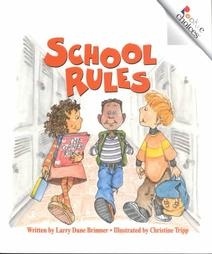 Sit down! One, two! Look at your shoe!
Sit down! One, two! Look at your shoe!
Stand up! Three, four! Look at the door!
Be quiet! Listen and look!
Walk! One, two, three and four!
Stop! Open the door!
Stop! Close the door!
Come here! Five, six, seven and eight!
Stop! Write the date!
Back up! Nine, ten! Say it again!
Ten, nine, eight, seven and six
Five, four, three, two and one!
Stop!
CLASSROOM ACTIVITIES
INTRODUCTION. INTERVIEWING.
INTRODUCTION
Ø Read and listen.
- Hello! I’m Bob. I’m an intending teacher. I’m American. I’m 25.
Ø Think about the possible replies.
- Hello! I’m Nick. I’m a __________. I’m _____________. I’m _____.
- Hello! I’m Paul. I’m a __________. I’m _____________. I’m _____.
- Hello! I’m Ken. I’m a __________. I’m _____________. I’m _____.
- Hello! I’m Polly. I’m a __________. I’m _____________. I’m _____.
- Hello! I’m Kathy. I’m a __________. I’m _____________. I’m _____.
Ø Tell the class about yourself.
Ø Hello! I’m …. I’m _______________. I’m ___________. I’m _______.
Ex. 1 Read a short text, answer the teacher’s questions.
| Hi, My name is Sarah. I’m English. I’m from London. I’m 13. I’m a pupil at St James School in London. What about you? Love, Sarah |
Ex.2 Write the application letters for the following people.
 |  |  |  |
| Mary Smith Nursery school teacher English London | Tom Stuart Infant school teacher Irish Dublin | Jenny Brown Preschool teacher Canadian Ottawa | Robert Grey Kindergartener Australian Sydney |
ENGLISH LETTERS AND SOUNDS
Letters
ü 20 consonants
ü 6 vowels
Sounds
ü 24 consonants
ü 20 vowels
- 12 simple sounds (5 long and 7 short vowels)
- 8 double vowel sounds
 ex.3 It is important to learn the alphabet! Listen to the teacher pronouncing the names, write down the names and then spell them.
ex.3 It is important to learn the alphabet! Listen to the teacher pronouncing the names, write down the names and then spell them.
/ʤɒn/ ________________
/ʤeɪms/ ________________
/ˈedwəd/ ________________
/ʤoʊɪ/ ________________
/ˈmaɪkəl/ ________________
/deɪvɪd/ ________________
/ˈreɪtʃəl/ ____________
/ˈfi:bi:/ _____________
/ˈʤu:li:/ ___________
/ˈseərə/ ____________
/ˈlaɪzə/ ________________
